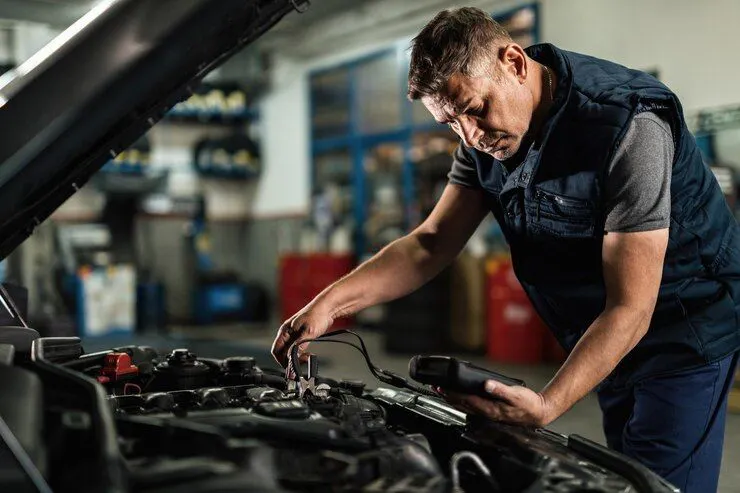Taking on DIY car repairs can be a rewarding and cost-effective way to maintain your vehicle. With the right tools, knowledge, and a bit of patience, you can handle many common car issues yourself. This guide will walk you through the essentials of DIY car repairs, helping you save money and time.
1. Essential Tools and Equipment
Before you start any DIY car repair, it’s crucial to have the right tools. Here are some must-haves for your toolkit:
- Socket Wrench Set: Versatile for loosening and tightening bolts and nuts.
- Screwdrivers: Both flathead and Phillips-head for various screws and fasteners.
- Pliers: Useful for gripping, bending, and cutting wires and hoses.
- Jack and Jack Stands: For safely lifting and securing your vehicle.
- Torque Wrench: Ensures bolts are tightened to the manufacturer’s specifications.
- Multimeter: For diagnosing electrical issues.
- Oil Filter Wrench: Makes changing your oil filter easier.
2. Setting Up Your Workspace
A well-organized workspace is essential for efficient and safe car repairs. Consider the following:
- Location: Choose a well-ventilated area with good lighting, such as a garage or driveway.
- Organization: Keep your tools and parts neatly organized and easily accessible.
- Safety: Have fire extinguishers, first aid kits, and proper ventilation to minimize exposure to harmful fumes.
3. Safety First
Working on your car can be dangerous if proper precautions aren’t taken. Always prioritize safety:
- Protective Gear: Wear safety goggles, gloves, and steel-toed boots.
- Proper Technique: Follow manufacturer guidelines and procedures.
- Education: Familiarize yourself with common hazards and safety protocols.
4. Basic Maintenance Tasks
Here are some basic maintenance tasks you can handle yourself:
- Oil Change: Regularly changing your engine oil keeps it running smoothly. Drain the old oil, replace the oil filter, and add new oil.
- Air Filter Replacement: A clean air filter ensures proper airflow to the engine. Replace it every 12,000 to 15,000 miles.
- Battery Maintenance: Clean the terminals and check the charge level. Replace the battery if it’s more than three years old.
- Tire Rotation: Rotate your tires every 6,000 to 8,000 miles to ensure even wear.
- Brake Pad Replacement: Inspect your brake pads and replace them if they are worn down to 1/4 inch or less.
5. Diagnosing Common Issues
Learning to diagnose common car problems can save you a trip to the mechanic:
- Check Engine Light: Use an OBD-II scanner to read the error codes and identify the issue.
- Strange Noises: Listen for unusual sounds and pinpoint their source. Squealing brakes, for example, may indicate worn brake pads.
- Fluid Leaks: Identify the type of fluid (oil, coolant, transmission fluid) and locate the source of the leak.
6. Advanced Repairs
Once you’re comfortable with basic tasks, you can tackle more advanced repairs:
- Replacing Spark Plugs: Worn spark plugs can cause misfires and poor fuel economy. Replace them every 30,000 miles.
- Changing Brake Rotors: If your rotors are warped or worn, replace them along with the brake pads.
- Fixing Electrical Issues: Use a multimeter to diagnose and repair electrical problems, such as faulty wiring or blown fuses.
7. Using Online Resources
The internet is a valuable resource for DIY car repairs. Websites, forums, and video tutorials can provide step-by-step instructions and troubleshooting tips. Some popular resources include:
- YouTube: Find video tutorials for almost any repair task.
- Automotive Forums: Join communities where you can ask questions and share experiences.
- Manufacturer Websites: Access service manuals and technical bulletins.
8. Benefits of DIY Car Repairs
Taking on car repairs yourself offers several benefits:
- Cost Savings: Avoid labor costs and markups on parts.
- Convenience: Perform repairs on your schedule without waiting for an appointment.
- Knowledge: Gain a deeper understanding of your vehicle and how it works.
- Satisfaction: Enjoy the sense of accomplishment from fixing your car yourself.
9. When to Seek Professional Help
While DIY repairs can save money, some tasks are best left to professionals:
- Complex Electrical Issues: Advanced electrical problems may require specialized equipment and expertise.
- Transmission Repairs: Transmission work is often complicated and requires precision.
- Major Engine Repairs: Internal engine repairs can be intricate and time-consuming.
10. Regular Maintenance Schedule
Keeping a regular maintenance schedule can prevent many common issues and extend the life of your vehicle. Follow your manufacturer’s recommendations for maintenance intervals and tasks.
Conclusion
DIY car repairs can be a practical and rewarding way to maintain your vehicle. By investing in the right tools, setting up a safe workspace, and educating yourself on basic and advanced repairs, you can save money and time while gaining valuable skills. Remember to prioritize safety and know when to seek professional help. Happy repairing!

